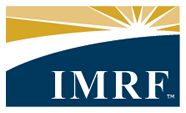Voluntary Payments to Reduce the Unfunded Actuarial Accrued Liability
November 15, 2013
We encourage each Authorized Agent to share this memorandum with their unit of government’s financial administrators.
Executive Summary
Recently employers who have an unfunded actuarial accrued liability (UAAL) have inquired how they can reduce their unfunded balance. There are three ways the UAAL can be reduced.
- IMRF could earn more on its investments than its assumed rate of return of 7.5%.
- An employer pays the employer contribution rate set annually by IMRF.
- An employer can make voluntary payments specifically designated to pay down the UAAL.
If you are interested in discussing the pros and cons of making additional contributions for your entity, please contact IMRF's Chief Financial Officer at 630-368-5345. To maximize potential benefits, it is important to make additional contributions before year-end.
Recently employers who have an unfunded actuarial accrued liability (UAAL) have inquired how they can reduce their unfunded balance. There are three ways the UAAL can be reduced.
- IMRF could earn more on its investments than its assumed rate of return of 7.5%.
While this would be the most beneficial for all employers, it is not probable from an actuarial perspective. Over the long term, IMRF does not believe that it will earn investment returns that are significantly more or less than 7.5%. From a historical perspective, IMRF earned significantly more than 7.5% during the 1990s; the average annual return was 12.29%. However, in the 2000s, IMRF earned significantly less; the average annual return was 4.23%.
IMRF assumes it will earn 7.5% over the long term and sets employer contribution rates accordingly. -
An employer pays the employer contribution rate set annually by IMRF.
On each employer’s Contribution Rate Notice (available via the Document Archive of Employer Access), the Retirement Rate is broken out by “Normal Cost” and “Funding Adjustment.” The Normal Cost is the cost to purchase a year of service in the current year. The Funding Adjustment is that portion of the employer rate dedicated to paying interest and principal on its UAAL. The UAAL carries a 7.5% interest charge.
For 2014 employer contribution rates:- Employers with the ability to levy property taxes have an amortization period of 29 years for paying down the UAAL. The amortization period will reduce each year until it reaches 15 years, at which time it will become a rolling 15-year amortization period.
- Employers without the ability to levy property taxes have a rolling 10-year amortization period for paying down the UAAL.
- An employer can make voluntary payments specifically designated to pay down the UAAL.
A number of IMRF employers have made additional payments for this purpose. Prior to making these contributions, employers frequently ask what are the pros and cons of making additional contributions..
- Pros
By making an additional contribution, the employer will reduce its employer contribution rate. For example, an employer with an $8 million UAAL and an IMRF payroll of $12.7 million would reduce its Funding Adjustment rate from 3.48% to 3.43% with a $100,000 payment. This would result in a reduction in employer contributions of $6,350 on an annual basis. The new UAAL (all other things being equal) would be $7.9 million.
If IMRF earns approximately 5.38% (based on 2013 data) or more on its investments, an employer would receive a credit on its annual employer reserve statement. The reason for this credit is that employers—as sponsors of a defined benefit plan—bear the risks and rewards of investment returns. The amount of the credit is enhanced by the magnitude of the additional employer contribution to pay down its UAAL. (A smaller UAAL results in a larger employer reserve balance; a larger employer reserve balance results in a larger credit.) See example below. - Cons
As noted above, employers bear the risks and rewards of investment returns. If IMRF were to earn less than approximately 5.38%, employers would be charged for the shortfall. To the extent that an employer had made an additional contribution to pay down its UAAL, the magnitude of the charge would be increased. (A smaller UAAL results in a larger employer reserve balance; a larger employer reserve balance results in a larger charge.) See example below.
- Pros
| Example Based on 2013 Data | ||||
|---|---|---|---|---|
| If IMRF earns 11.9% | If IMRF earns 3.1% | |||
| Additional Payment | $100,000 | Additional Payment | $100,000 | |
| Employer credited 22% | $24,000 | Employer charged 9% | ($12,000) | |
| Return on $100,000 payment | $24,000 | Return on $100,000 payment | ($12,000) | |
Contact IMRF
If you are interested in discussing the pros and cons of making additional contributions for your entity, please contact IMRF's Chief Financial Officer. In order to maximize potential benefits, it is important to make additional contributions before year-end.

